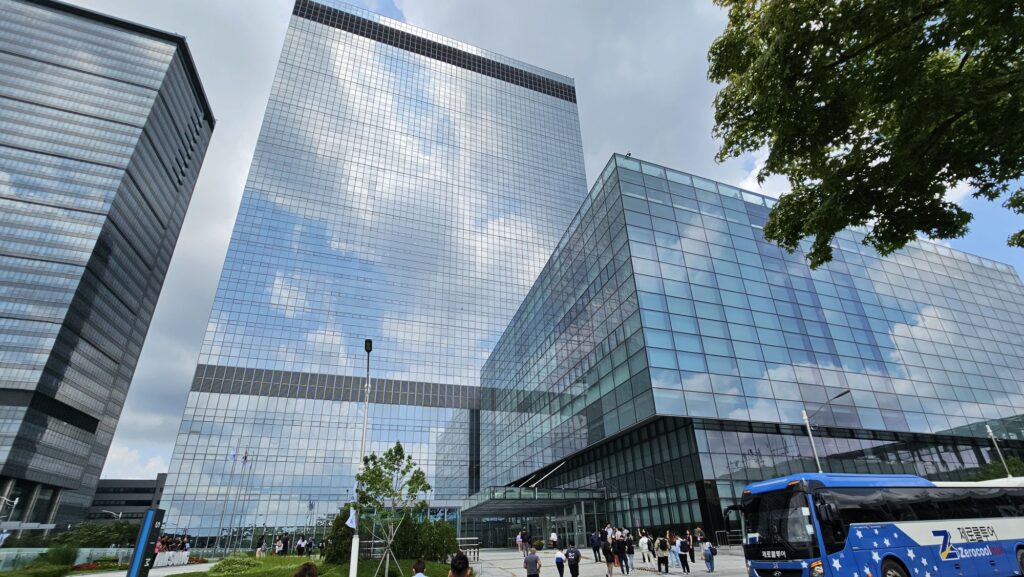
Exploring Samsung Digital City: 8 Must-See Marvels Inside Korea’s 390-Acre Technological Wonderland
It’s one thing to own a cutting edge smartphone but it’s another thing entirely to visit the place it was born. Ahead of Galaxy Unpacked 2023 in Korea, we were invited to a tour of Samsung Digital City, the crown jewel of their vast global network of holdings where their most important products like the latest Galaxy Z Fold5, Galaxy Z Flip5 series, their Neo QLED 8K TVs and more were developed.

Here’s what we discovered on our grand tour of Samsung Digital City and 10 amazing marvels hidden amidst its sprawling campus that spans over 390-acres or about 121 million square metres of facilities.
What is Samsung Digital City
Located about 30 kilometres south of Seoul in South Korea in the city of Suwon, Samsung Digital City acts as a Research & Development Centre where their best and brightest minds work on creating the next generation of smartphones, TVs and more. While most of the city is off limits to visitors, we were offered a guided whistle-stop tour of their most important facilities and given a primer as to the most important and unique aspects of Samsung Digital City.
For the uninitiated, Samsung was founded in Suwon, South Korea as a grocery trading store in March 1938 by its founder, the late Lee Byung-Chull. The company began diversifying into electronics in 1969 with the manufacture of black and white televisions and home appliances for export.
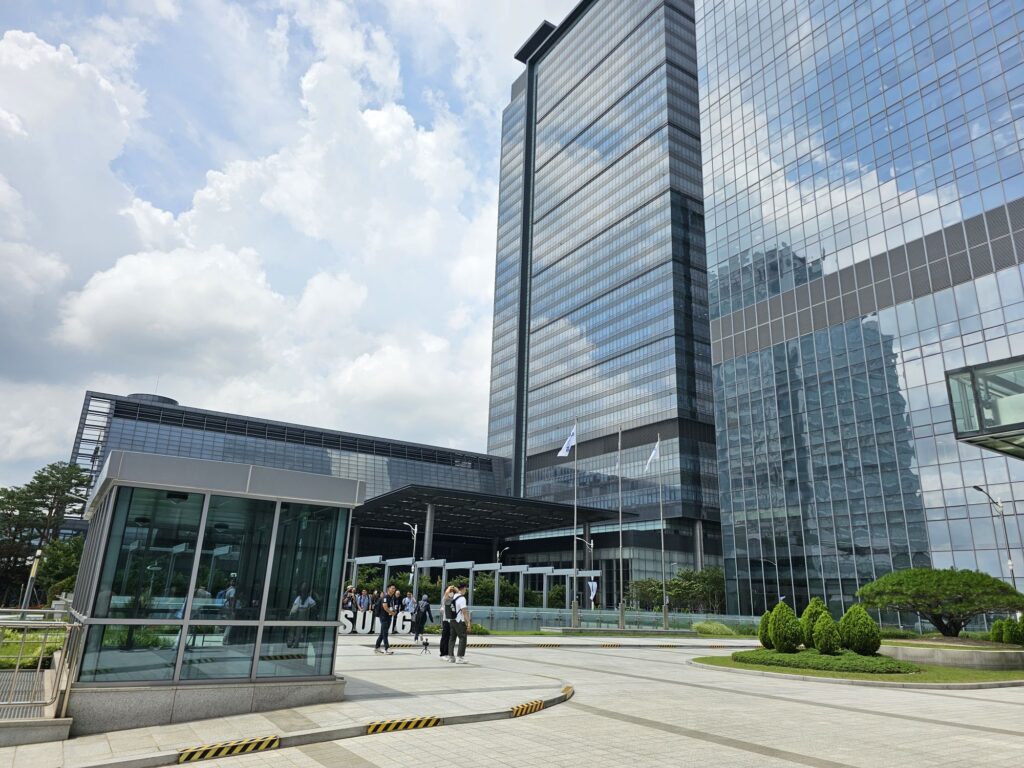
Today, Samsung Digital City acts as a hub for Samsung’s Device eXperience (DX) business which includes smartphones, tablets and TVs, with the facility encompassing aspects of research and development and much more. Today, Samsung’s DX business sees a whopping KRW182,489.7 billion in sales which is about 657,569.32 billion MYR.
The Samsung Digital City campus itself hosts more than 37,000 employees and across its 121+ million square metres are more than 130 buildings on campus that not only include four massive 38-floor high corporate office towers, a host of R&D labs, recreational facilities for employees and five research institutes designated as R1 to R5. The first research institute, designated as R1 was established in 1980 to increase their patent portfolio.
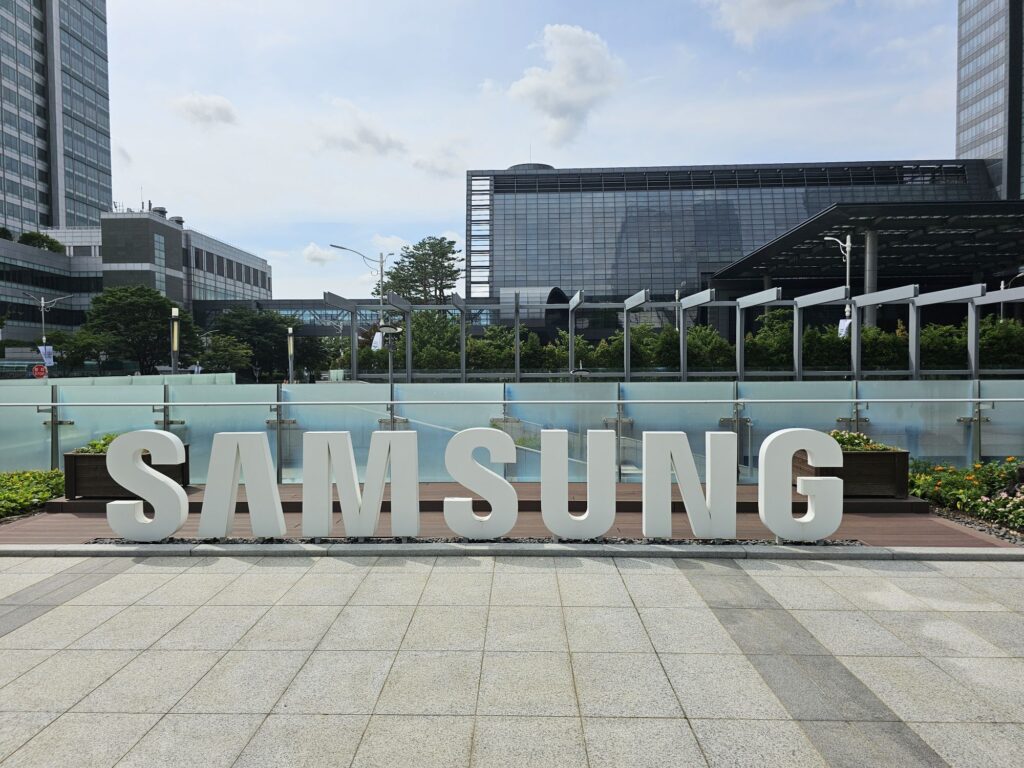
The second research institute, designated as R2 was established in 1987 to optimise mobile development costs. R3 is where Samsung focuses on next-generation telecommunications technology while R4, established in 2005 is where Samsung’s Visual Display teams work on next-generation advances in imaging technologies like curved TVs, UHD Video walls and Samsung’s sound bars, all of which were designed at R4.

Last but not least, R5, which was built in 2013 and spans 28 floors, acts as Samsung’s Mobile R&D centre where the Galaxy series smartphones were developed along with the software and many features used in those devices. To make it easy for employees to get to Samsung Digital City, Samsung operates more than 500 buses daily across 100 routes in Seoul to get employees there and back.
Samsung Digital City has an Olympic sized swimming pool
Table of Contents
Samsung Digital City isn’t just all about research and work and emphasises a healthy work environment too with a host of recreational facilities with the ultimate one being an Olympic-sized swimming pool.

Samsung Digital City hosts an Olympic sized swimming pool for employees
That’s not all as the campus has a park that’s 37,699 square metres in size which comprises 4% of the size of DIgital City and about 1/93rd the size of New York’s Central Park. That’s not all, the campus also has 10 basketball courts, four badminton courts, three football pitches and two baseball diamonds.
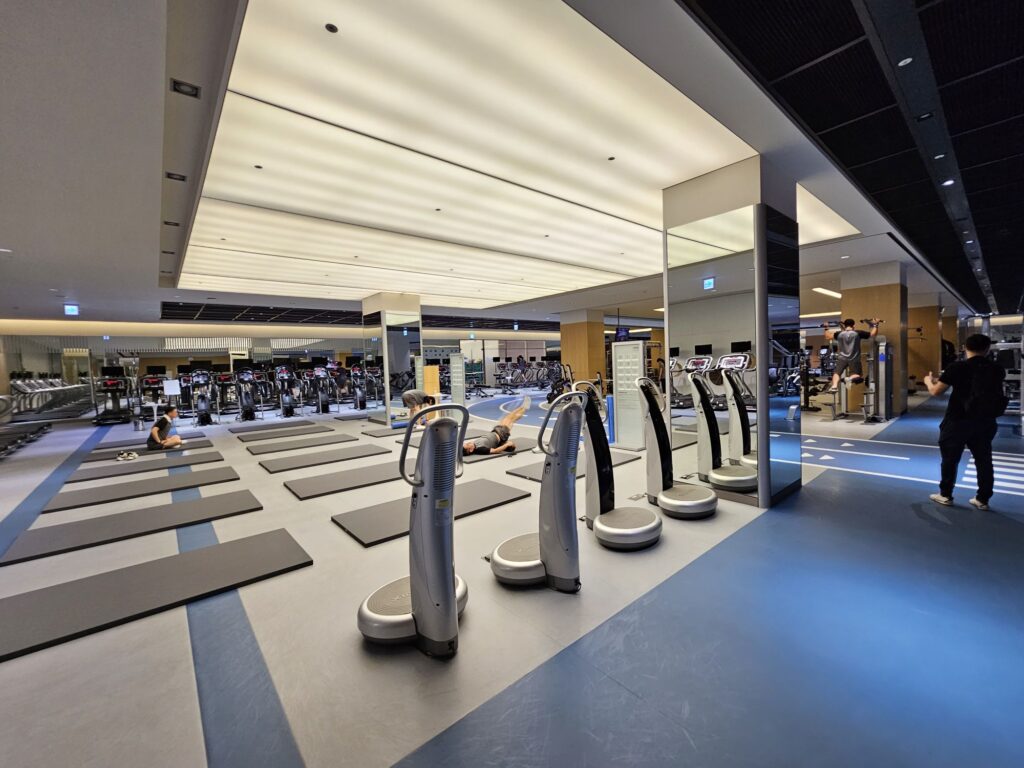
Samsung Digital City also features a fully equipped gym complete with an indoor running track
Samsung Digital City has its own water treatment facility
Samsung DIgital City features a Blue Wave Park advanced water treatment facility capable of purifying 11,000 tons of water per day which is approximately 11,000,000 litres of water daily.
Coincidentally, the facility also sits next to the actual Blue Wave Park that hosts facility earns its name on account of the fact that it also sits next to a Blue Wave Park that hosts a lush expanse of greenery and acts as a green space to expand the eco-friendly areas of the Samsung Digital City Campus.
While we weren’t granted access to the grounds of the Blue Wave Park water treatment facility, the exterior itself was a massive network of pipes stretches above, across and below a network of girders and buildings
Samsung Digital City has over 858 activity clubs for staff
It’s all not just work at Samsung Digital City and the company has over 858 clubs that meet at the 40 club rooms in Central Park to allow employees to unwind and foster new hobbies and interests.
The various clubs cater to interests, sports both general and obscure ranging from popular spots like table tennis and taekwondo to musical and orchestral clubs and there’s even a barista club on campus devoted to perfecting the fine art of making better coffee. Sign us up!
Samsung Digital City has its own elite rescue team
Established in October 1995, the Samsung 3119 Rescue Team is the first and only civilian emergency rescue organisation in Korea based at Samsung Digital City with cutting edge advanced rescue systems, state-of-the-art vehicles and equipment and is staffed by an elite team of 31 professionals that include firefighters and emergency response teams.
Not only do they keep Samsung Digital City safe, they have carried out mercy missions across the globe including the KAL plane crash in Taiwan, an earthquake in Taiwan and more.
Samsung Digital City features Nanum kiosks that make donating to charity a cinch
A series of digital donation boxes dubbed as Nanum Kiosks are located throughout Samsung Digital City that allow an employee to simply tap their employee ID card to donate KRW1,000 to a charity.
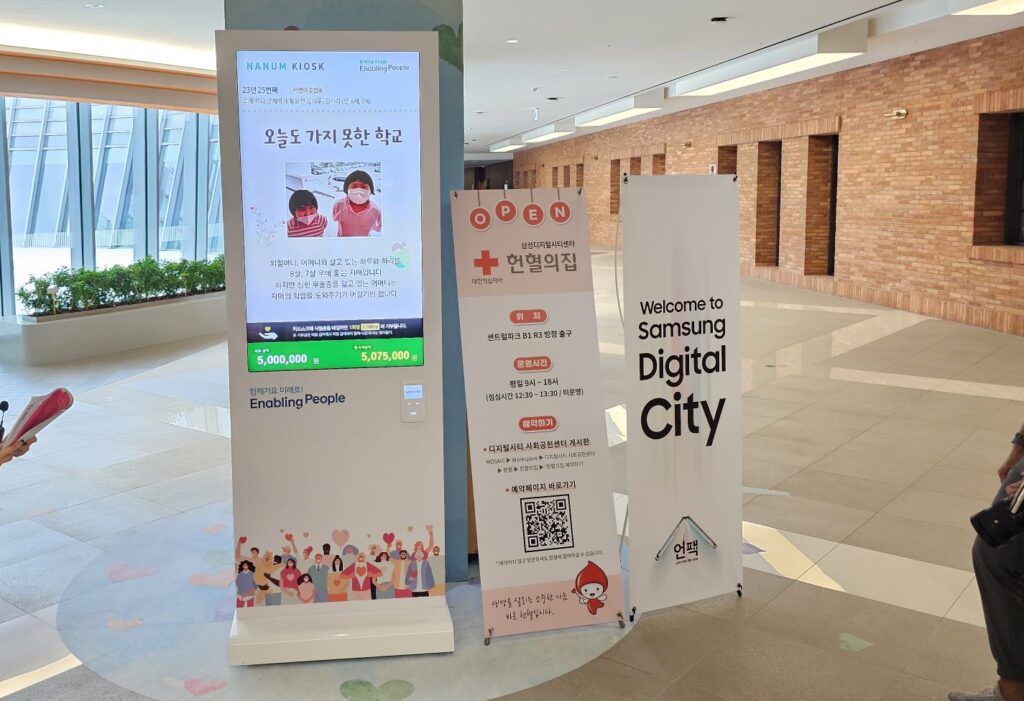
The Nanum Kiosks first started off at Samsung’s Gumi facility and was implemented at Digital City in 2016 and has since expanded to 59 Samsung campuses across the globe. To date, Samsung has raised more than USD$2.2 million in Korea via the Nanum Kiosks for charitable causes.
The unique Samsung Innovation Museum (SIM) hosts a complete history of the electronics industry
The Samsung Innovation Museum (SIM) is located on the Samsung Digital City grounds and was opened in 2014 with its 10,950 square metres of space spanning four floors and showcasing the history of the electronics industry and Samsung’s leadership in the field from its earliest delving in the industry to its present day.
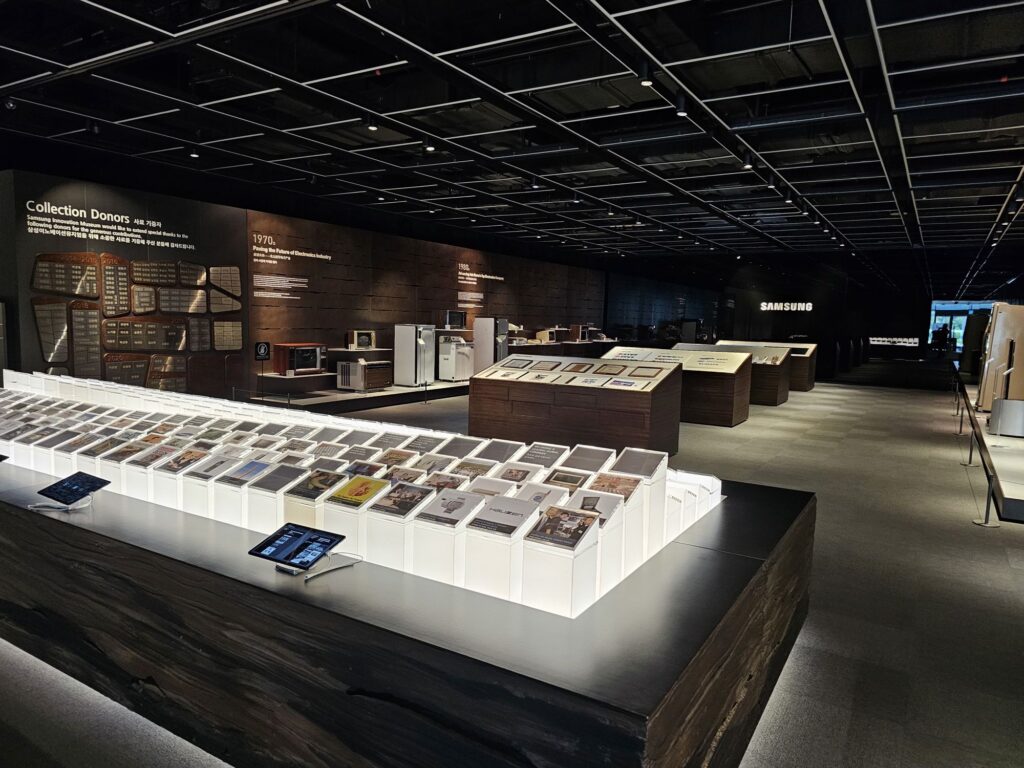
There are a number of interesting exhibits here including the infamous banana phone made by Samsung that was used in the first Matrix movie along with quaint and working examples of their earliest TVs.
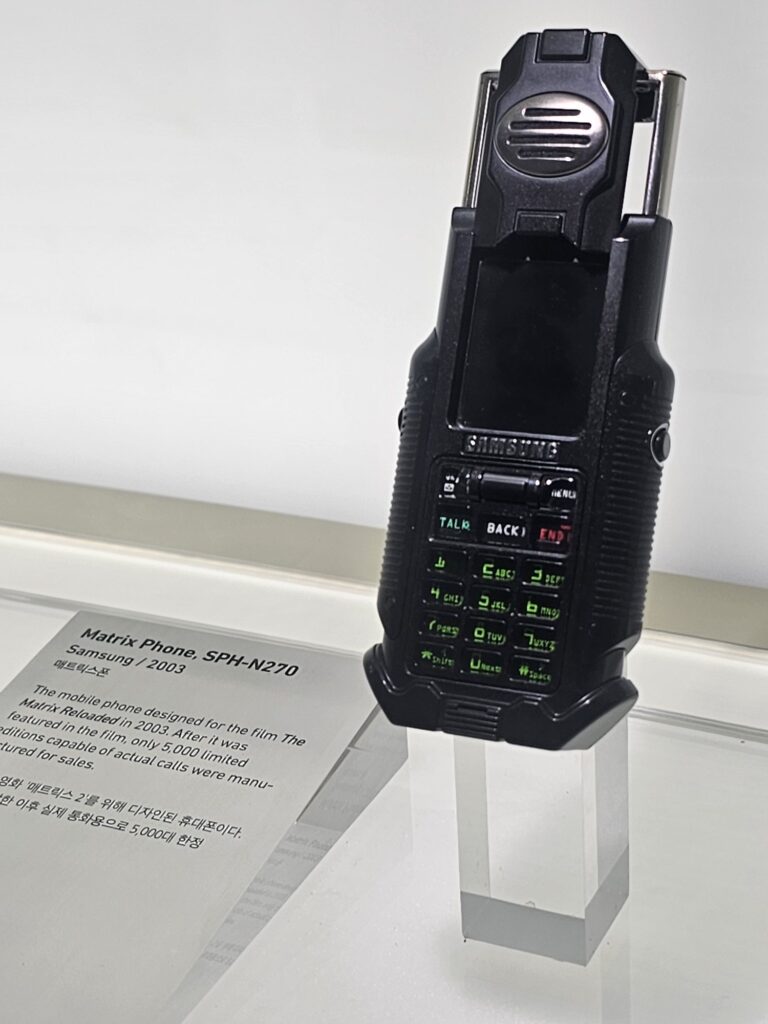
The famous banana phone used by the one and only Keanu Reeves in the Matrix Reloaded film. Only 5,000 of them were ever made.
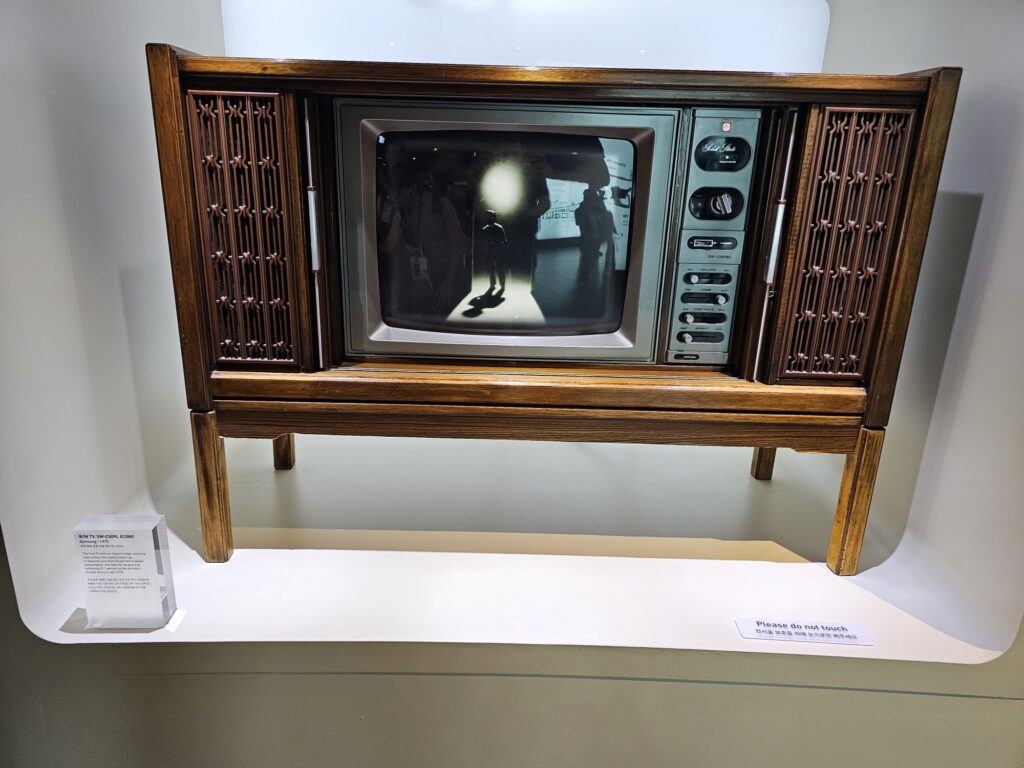
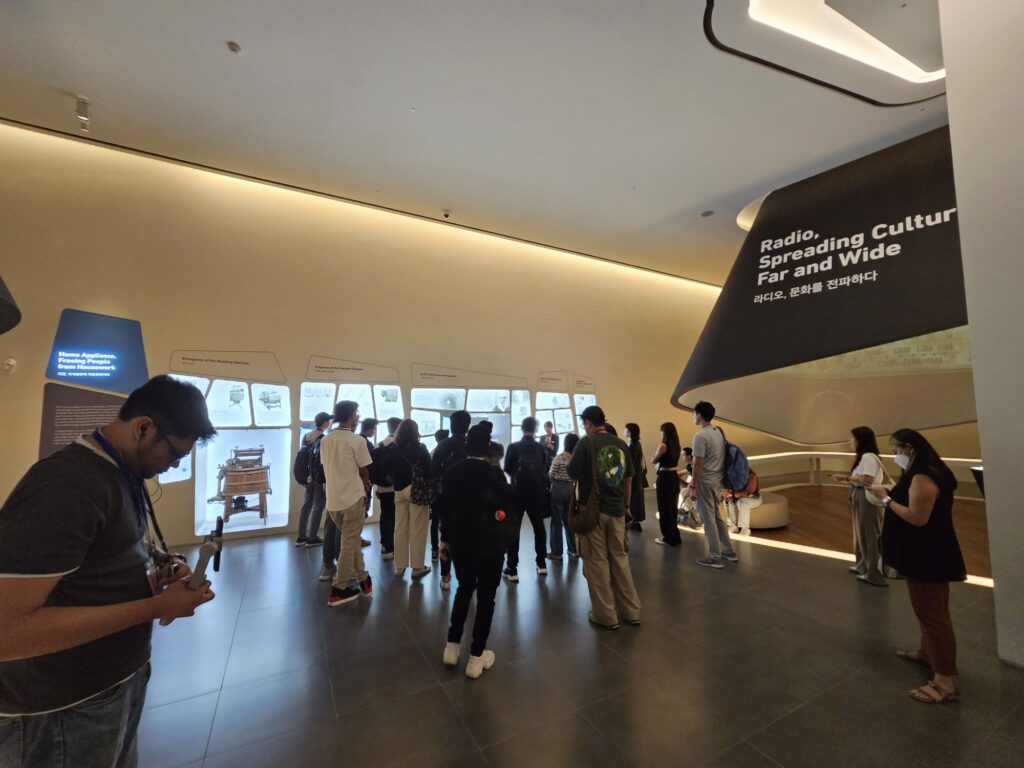
If you’re into consumer tech and you’d likely be seeing as you’re reading this, this is arguably the most interesting spot in Samsung Digital City. The tours are offered in Korean, English, Chinese, Japanese and Spanish and are free of charge. Tours are available on weekdays from 10.00 – 18.00 and on Saturdays from 9.00 – 17.00.
Innovation is fostered and encouraged with Samsung C-Lab Space
Samsung hosts the C-Lab space which is an in-house idea incubation programme that enables employees to explore and create new ideas. Those with approved projects get a year off to explore their ideas, develop a working prototype and then get it assessed for viability.
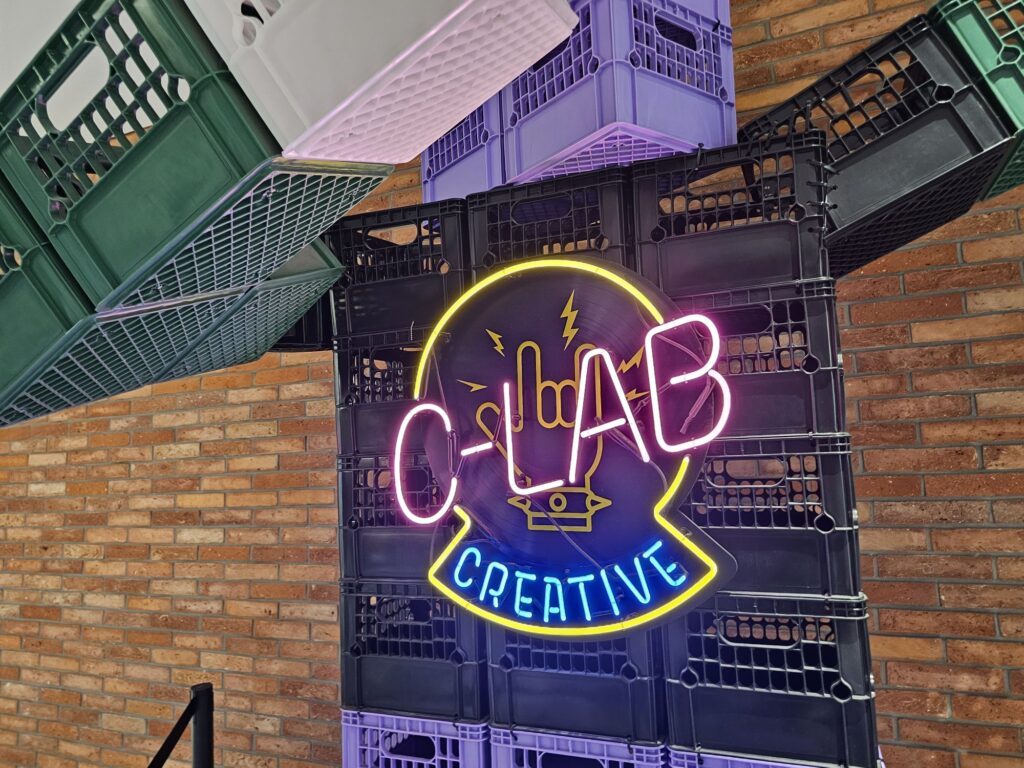
Initiated in 2012, the C-Lab programme has seen 1,600 Samsung employees participating in over 390 projects to date with 93 successful ones transferred to an in-house Samsung division and another 40 developed into spin off companies.
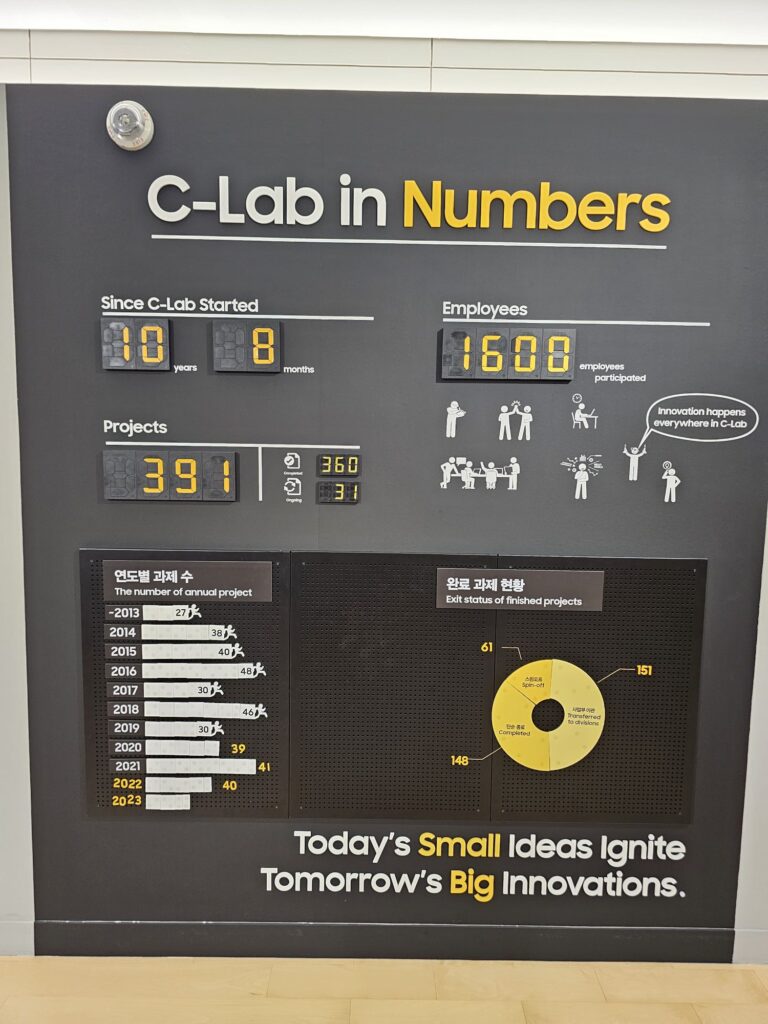
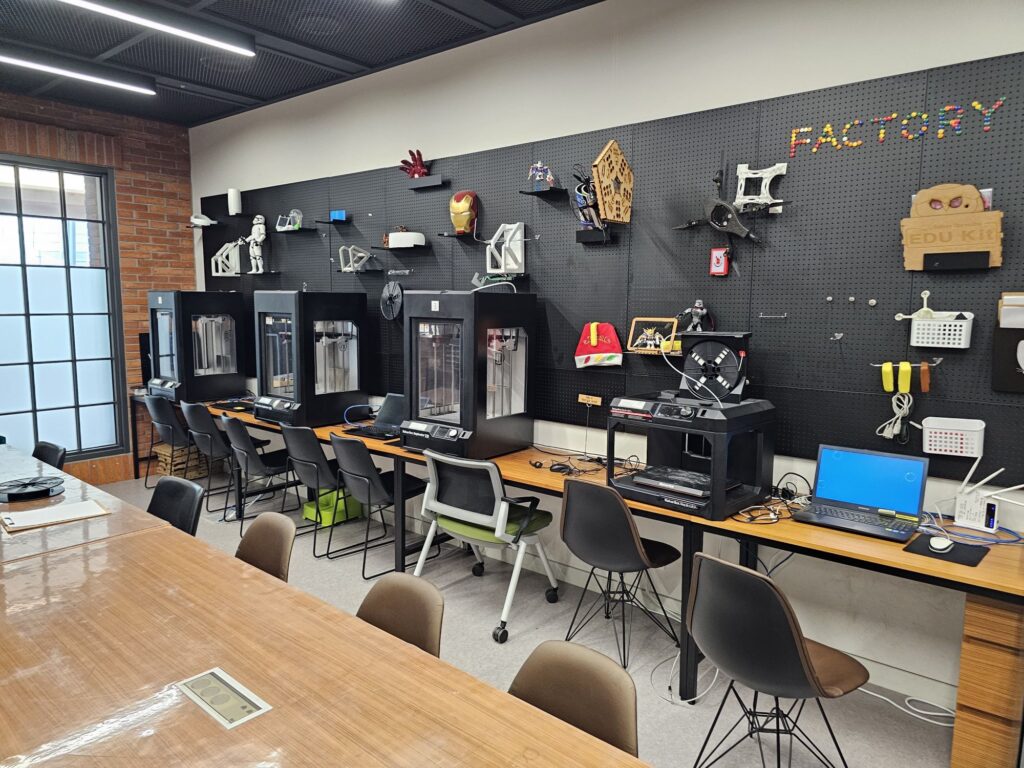
We managed to visit a small section of their C-Labs and exhibits displaying the process of how a C-Lab concept is initiated from start to finish and it had a very appealing start-up vibe that really fostered innovation.
Samsung Digital City has an eX Home house completely kitted out with their tech
Samsung has made significant inroads of late into smart home technologies especially for home living and they’ve kitted out a complete house on the campus grounds with almost the entirety of their line-up of tech.
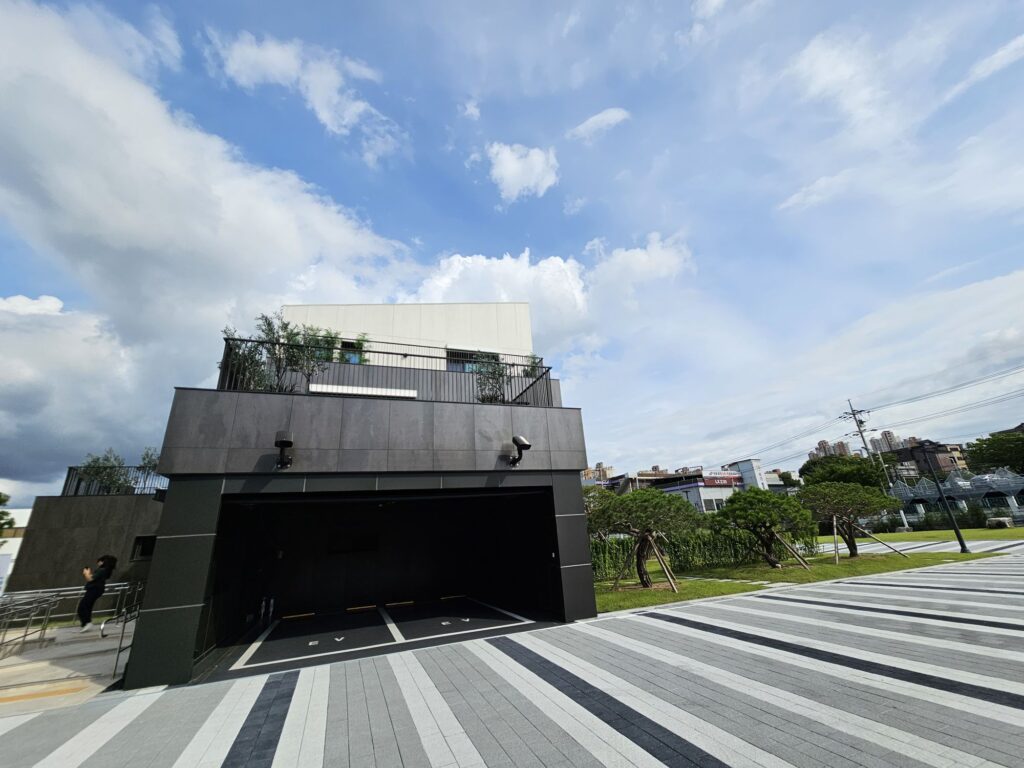
o wit, you get to see a slick modern house crammed to the rafters with 298 of the finest examples of their gear from their TVs to their refrigerators in a realistic home setting. It certainly offered interesting ideas on upgrading our own home setup.
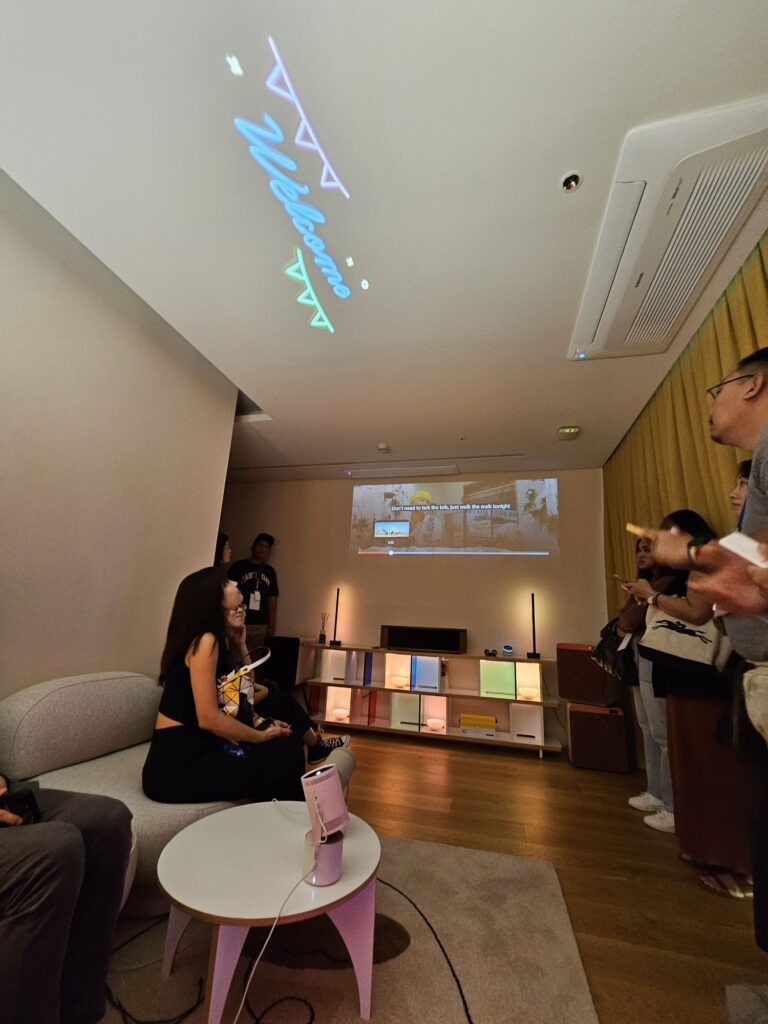
The huge Samsung eX home integrates all these products into intelligent, authentic home settings that explores home networks, energy efficiency, security and simplified connectivity along with the use of solar power to achieve a net-zero smart home.
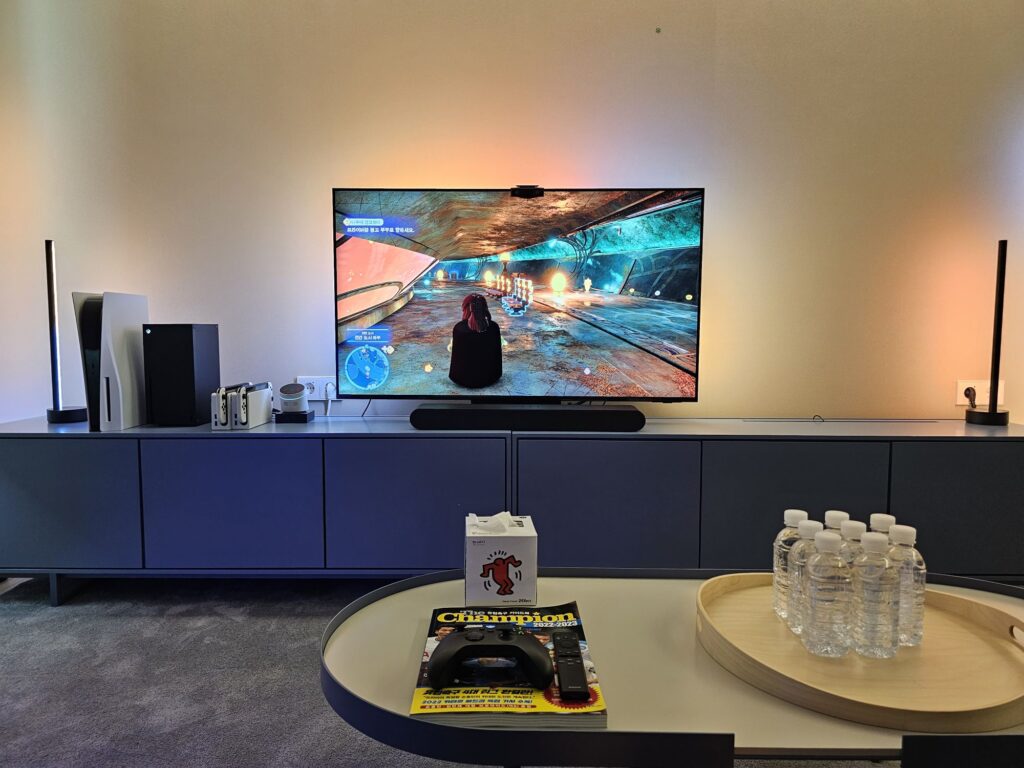
[Source Samsung Newsroom]
